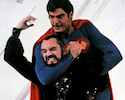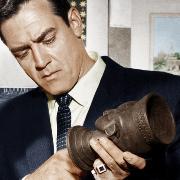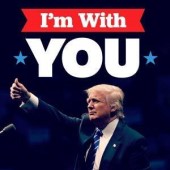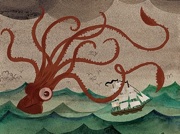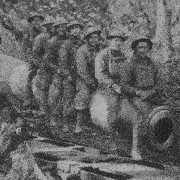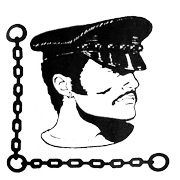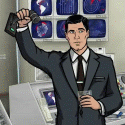|
i just got to the part where the author had to start digging into the intelligence agencies' actions on, and within, various counter-culture groups in the sixties. the book's been amazing so far. i plan to write up an effortpost summing up my thoughts once I get a bit further, or at least when i finish
|
|
|
|

|
| # ? May 5, 2024 09:36 |
|
20 Blunts posted:I'm getting through Chapter 3. Seems clear that probably a lot of famous people spent more time with Manson than they care to admit. poo poo, I didn't realize Doris Day's son was one of the hippy musicians who befriended the hippy murderers. "Everybody knew each other, and nobody wants to talk about it anymore" is an early realization that O'Neil himself muses on, obviously not the end of the book. I'd never heard of this book before seeing this thread so I'm definitely going to have to get it, but if you want the story through the eyes of Hollywood, the season of You Must Remember This... about Manson and Hollywood is really something to explore. It's the first time I really heard extended talk about Manson and his family beyond just knowing that he was a bad guy, and it goes on a lot of interesting tangents talking about people like Terry Melcher and Doris Day, Dennis Wilson, Bobby Beausoleil and Kenneth Anger, Sharon Tate, Jay Sebring and Roman Polanski, and of course, The Beatles and the White Album (and more specifically, Manson's fixation on it).
|
|
|
|
In Chapter 7. Book really books up steam in Chapter 4 and hasn't let up. Chapter 7 delves into FBI's COINTELPRO and CIA's (domestic) CHAOS - both anti-left domestic surveillance and disruption activities. I hope the aside about Milton bears fruit but I don't think it will, seems more a tie-in to the intelligence operations O'Neill then begins researching.
|
|
|
|
20 Blunts posted:I'm getting through Chapter 3. Seems clear that probably a lot of famous people spent more time with Manson than they care to admit. poo poo, I didn't realize Doris Day's son was one of the hippy musicians who befriended the hippy murderers. "Everybody knew each other, and nobody wants to talk about it anymore" is an early realization that O'Neil himself muses on, obviously not the end of the book.
|
|
|
|
https://www.youtube.com/watch?v=hVo3GgRvJvc If anyone is interested, this documentary Mondo Hollywood was produced in 65/66 and has a lot of eccentric figures in Hollywood. It even has an interview with Jay Sebring. Manson wouldn't arrive in Hollywood until 68 though. Chuka Umana has issued a correction as of 03:20 on Feb 17, 2020 |
|
|
|
I shot through half of this book like a cannon when I was home sick last weekend, kind of crawling through it now but this book is just too good. So far, "for unknown reasons [D.A./Sheriff/Officer] let Manson & Co. go," has been the story again and again. I'm on Chapter 10 and as interesting as the chapter or two about spooks undermining left-wing groups was, O'Neil hasn't solidly made Manson's connection to all of that. It is just weird as gently caress that he constantly got away with everything. Out of all the files O'Neil could get, the probation file is still shrouded in secrecy. His probation officer had no other clients to look after, just Manson, also weird. And, somehow he missed/overlooked a ton of trouble his sole client constantly was getting into. I understand that police would let "good ole boys" get away with a lot more poo poo back then, but all of this? If I'm following O'Neil correctly, he's done a good job to show all the various gently caress-ups by the law during the entire Manson saga. The conspiratorial content is, there are so many gently caress-ups it begins to seem intentional, like there was a guiding hand. Anybody disagree on that? I've never 'gone in' on conspiracies - JFK and 9/11 being the big ones that just don't interest me/seem crass at times. As I read on, I don't really expect, as one might do with 9/11 or JFK, to start believing in something like "the government did this." Judging by the chapter names, the final 150 pages might change my mind. It is a tantalizing thought that between 1967 and 1968, and even after the murders, some spooky guy in a suit was keeping tabs on Manson, making subtle contact with the variety of people Tom O'Neil has covered, giving them reason to err on silence. It's not even far-fetched - O'Neil references that super-shady LAPD surveillance team that possibly even had eyes on the house as people got murdered!
|
|
|
|
iirc o'neill showed the arrest record to a clean judge, the judge said the cops were almost certainly running a catch and release job with manson.
|
|
|
|
It's nice to see this thread continuing despite my neglect. I've been very busy the last couple weeks but the next chapter will be up soon.
|
|
|
|
Helsing posted:It's nice to see this thread continuing despite my neglect. I've been very busy the last couple weeks but the next chapter will be up soon. i posted about a book called 20 days of turin in the podcast thread. a surreal italian social horror thriller from 1978. it was written in the middle of the years of lead, and is a commentary on unknowable forces and violence. it is so far amazing. just mentioning it here cos i think you asked for other recommendations about/from the period and it certainly has the right vibes for this thread.
|
|
|
|
gh0stpinballa posted:i posted about a book called 20 days of turin in the podcast thread. a surreal italian social horror thriller from 1978. it was written in the middle of the years of lead, and is a commentary on unknowable forces and violence. it is so far amazing. just mentioning it here cos i think you asked for other recommendations about/from the period and it certainly has the right vibes for this thread. Yeah I actually just responded to your post (but in the Epstein thread). Suffice it to say I've already acquired a copy and look forward to starting it when I've got a bit of free time.
|
|
|
|
A good read, nice to see a lot of these perpheral characters finally get a voice. I would like to recommend cielodrive.com as a great clearinghouse for a ton of information and updates on the principle characters as well as pretty much every photo ever taken on the subject. An excellent primer and reference source
|
|
|
|
ya know, "Where did Charles Manson get all of that acid?" is a question it took a very long while for this book to bring up, lol
|
|
|
|
20 Blunts posted:ya know, "Where did Charles Manson get all of that acid?" is a question it took a very long while for this book to bring up, lol this will sound dumb but until i read CHAOS i had actually never stopped to wonder where this penniless hippie was getting bulk batches of acid, i mean he must have got through so much to keep the family dosed all day and night continuously. when you throw in the raids and arrests that came to nothibg leading up to the massacre the crack ping becomes undeniable.
|
|
|
|
LSD then was the good stuff too. I've tripped a few times but i doubt it was ever actually proper LSD. I seem to remember that in modern times there was a very small clique of people producing good old fashioned LSD but they all got stiched up and whatever is being sold recreationally now isn't acid at all, but that could just be a drug myth for all i know.
|
|
|
|
I guess if you've read the adventures of Hunter S. Thompson, Ken Kesey or the Grateful Dead, it seems like acid was prevalent enough that Charles Manson may have been able to acquire a lot of it for not much. I've done what I'm certain was legitimate acid (an acquaintance got it off of silk road!!!). That was about ten years ago. Part of me thought, what if the CIA is behind this silk road thing???
|
|
|
|
Sleekly posted:LSD then was the good stuff too. I've tripped a few times but i doubt it was ever actually proper LSD. Eh, yes, but if you get it from a reliable source no. Sometimes "acid" gets sold that's some research chemical though, yes, but someone in that chain knows it's not. Safety tip is to take only one dose - if it tastes like paper and doesn't have a numbing effect it's acid - metallic, bitter tastes and/or tongue numbness it's something else. If that's the case don't take another dose, some RCs have stupendously low dosages and terrible effects when overdosing. You're unlikely to suffer any ill effects on one dose unless you're allergic or something, might be a little more unpleasant than acid if it has physiological effects though (usually speed-type effects).
|
|
|
|
Helsing posted:It's nice to see this thread continuing despite my neglect. I've been very busy the last couple weeks but the next chapter will be up soon. Thank you for posting it. I finished college about 18 months ago, have a totally nonintellectual job, and I've been in a real reading depression lately. This kinda snapped me out of it. I finished the book and I feel like O'Neil's weakest case in the whole thing is the Jolly West stuff. If there was a conspiracy surrounding Charles Manson, then this book makes its best case looking at the LA County Sheriff, LAPD and perhaps a few Hollywood types as the culprits. He makes so many good connections to the LAPD, Bugliosi, Terry Melcher, Dennis Wilson, and then the Jolly West chapter kinda feels like it could've been written via Wikipedia. Insofar as the Haight-Ashbury clinic was like, an LSD scene spot -- that is the only connection that maybe suggests West came around, and maybe ran into Charles Manson. I'm not sure what to make of all that. And, somewhat meta, maybe these killings were just so brutal that its hard to accept the simple story. O'Neil's whole project is to somehow expand on and make sense of brutal murder. Maybe when all those A-listers denied taking interviews with O'Neil, it was because there actually was no more to say. A lot of O'Neil's case deals with the question of why weren't the Manson family put away earlier. Law Enforcement has changed so much since then - O'Neil kind of takes that for granted, I think. Maybe the LA Sheriff didn't care about Manson and his guns out in the desert precisely because they were more concerned with Black Panthers, putting down truly politically motivated Left-wing groups, etc. This post is pure spitballing, I'm not sure what else to do with the Manson saga. 20 Blunts has issued a correction as of 03:01 on Feb 21, 2020 |
|
|
|
most everyone is dead now can hope for a rosetta stone of an intel leak or maybe a deathbed confession but the conspiracy grass is pretty fuckin green at this point. whatever went on I kinda have to conclude that they got away with it
|
|
|
|
The last month has been a much busier time for me than I expected so I’ve been moving a lot slower than I would have liked but the write up for the next chapter should be ready in the next day or two.gh0stpinballa posted:this will sound dumb but until i read CHAOS i had actually never stopped to wonder where this penniless hippie was getting bulk batches of acid, i mean he must have got through so much to keep the family dosed all day and night continuously. While Manson doesn't appear to have had money he did have several dozen young women who were willing to do anything he asked of them. Sometimes this involved stealing and fencing stuff, especially cars, but Manson also cultivated influence by providing people with sexual access to his followers. This continued after his arrest and conviction, with Manson apparently using the offer of sexual favours to buy influence and protection while in prison. There are also several anecdotes in this book where it is clear that Manson's control over a harem of young women was the currency he used to work his way into the margins of the music industry. 20 Blunts posted:Thank you for posting it. I finished college about 18 months ago, have a totally nonintellectual job, and I've been in a real reading depression lately. This kinda snapped me out of it. I'm glad folks are enjoying the thread and using it as a reason to read the book. I also am glad we're getting a mix of reactions because that'll make the thread more interesting. Regarding your specific points I see where you're coming from but I'd push back on what you're saying in several areas. First, regarding Dr. West, I think that even if the extreme proximity of his clinic and Manson's very unusual parole arrangement (run out of the same clinic) were a total coincidence then that wouldn't change how weird and interesting Dr. West's experiments were. Here we have documented evidence of a CIA contractor who specialized in mind control drugs setting up a fake hippie pad in the middle of downtown San Francisco and trying to lure in young people to study like animals in a lab. Even if the relationship with Manson was entirely circumstantial - and given the conjunction of overlapping hard to explain and weird circumstances I'm not as quick to assume that - this would still be an interesting window into one of the CIA's clandestine attempts to infiltrate and study the counter culture. You suggest that perhaps O'Neill hasn't accounted for how much law enforcement standards have changed but this is an unfair charge. O'Neill addresses that exact concern and tried to address it by seeking out judges, parole officers and other people from the same time period as the case to ask them whether the treatment given to Manson was as extraordinary as it looks. O'Neill could be wrong or he might be misrepresenting the issue and I encourage you to criticize him on these grounds if that is what you think, but certainly he has at least tried to address your concern on that count. We'll get into that more in later chapters. I also think it is unfair to describe that section as sounding like it was written with the help of wikipedia. O'Neill actually breaks new ground here and uncovers documentary proof of West's activities in this period that had never previously been revealed. I think you're right that this section of the book is slapdash and he throws in a lot of highly suggestive anecdotes without ever saying too much about how they might all fit together. It’s fair to criticize him on those grounds. I think you’re being uncharitable in your description of his journalism though. He has uncovered some weird and jarring details that are difficult to reconcile with any official record and he sorta dumps these incongruous puzzle pieces at the reader’s feet and encourages them to assemble whatever picture they can despite half or more of the pieces not fitting there and the remaining pieces possibly belonging to different puzzles. However, on the whole I find the things he has uncovered are a bit more explosive and surprising than I think your comments give him credit for.
|
|
|
|
Helsing posted:I also think it is unfair to describe that section as sounding like it was written with the help of wikipedia. O'Neill actually breaks new ground here and uncovers documentary proof of West's activities in this period that had never previously been revealed. I think you're right that this section of the book is slapdash and he throws in a lot of highly suggestive anecdotes without ever saying too much about how they might all fit together. It’s fair to criticize him on those grounds. I think you’re being uncharitable in your description of his journalism though. He has uncovered some weird and jarring details that are difficult to reconcile with any official record and he sorta dumps these incongruous puzzle pieces at the reader’s feet and encourages them to assemble whatever picture they can despite half or more of the pieces not fitting there and the remaining pieces possibly belonging to different puzzles. However, on the whole I find the things he has uncovered are a bit more explosive and surprising than I think your comments give him credit for. i totally forgot he went into West's notes and was the first person to do so
|
|
|
|
joly west is such a perfect name for a CIA scientist
|
|
|
|
20 Blunts posted:i totally forgot he went into West's notes and was the first person to do so Yeah like I said the thing about this book that actually made me decide to cover it chapter by chapter instead of just summarizing the contents is how the book is simultaneously very messy and raw but also fairly well reported. O'Neill doesn't have a fully articulated narrative and you can tell he's unsure of what to believe himself but unlike most authors on subjects like this one he actually put the work in and did a shitload of interviews and read a lot of dusty old notes and forgotten dossiers. As I said earlier, most books are either way sloppier than this or way tighter. Chaos is unusual and interesting precisely because it is a messy and idiosyncratic book.
|
|
|
|
So I just started this, but I can't help but draw parallels between the counter culture of hippies and how O'neill describes that the public seemed to be just waiting for violence with the here and now. Except instead the counter-culture(s) of the extreme left and right are poised more violently. I can't help but wonder if the hippy movement had survived if we'd currently be in the situation we're currently in and the state's meddling in various left movements during the 60 and 70s just kept the lid closed on a pot that was already boiling and its been boiling ever since.
|
|
|
|
Doorknob Slobber posted:So I just started this, but I can't help but draw parallels between the counter culture of hippies and how O'neill describes that the public seemed to be just waiting for violence with the here and now. Except instead the counter-culture(s) of the extreme left and right are poised more violently. I can't help but wonder if the hippy movement had survived if we'd currently be in the situation we're currently in and the state's meddling in various left movements during the 60 and 70s just kept the lid closed on a pot that was already boiling and its been boiling ever since. yes, it all repeats but its not the establishment vs the hippies this time. the line is much starker than that and the gap preventing communication between the two camps much larger and harder to bridge. will there be an experiment like Manson again? its probably not necessary anymore. the media and the net allow for self radicalisation and the authorities can spin it however they like after whatever incident occurs. interesting times
|
|
|
|
CHAPTER 1: THE CRIME OF THE CENTURY The first chapter of the book opens: quote:My life took a sharp left-hand turn on March 21, 1999, the day after my fortieth birthday—the day all this started. I was in bed with a hangover, as I’d been after countless birthdays before, and I felt an acute burst of self-loathing. I was a freelance journalist who hadn’t worked in four months. I’d fallen into journalism almost by accident. For years I’d driven a horse and carriage on the night shift at Central Park, and over time, my unsolicited submissions to magazines like New York had led to bigger and better assignments. While I was happy, now, to be living in Venice Beach and making a living as a writer, I missed New York, and mine was still a precarious existence. My friends had obligations: they’d started families, they worked long hours in busy offices, they led full lives. Even though my youth was behind me, I was so untethered that I could sleep into the afternoon—actually, I couldn’t afford to do much else at that point. I felt like a mess. When the phone rang, I had to make a real effort just to pick it up. O’Neill says that he almost turned down the job. The Manson murders had never been very interesting to him and seemed overplayed. On the other hand he needed the job and trusted the editor pushing the story on him so he agreed. We are given a description of O’Neill’s journalistic experience. Most of it is celebrity entertainment stuff, sitting down with Hollywood celebrities in their homes. However: “For a recent story about an unsolved murder, I’d chased down some great leads, but because my case was mostly circumstantial, the magazine sensibly decided to play it safe, and the piece came out toothless.” Figuring that he can do better this time O’Neill takes what he imagines to be an easy deal” I agreed to file five thousand words in three months.” However, “Twenty years later, the piece isn’t finished, the magazine no longer exists, and I’m still in L.A.” quote:Before I interviewed anyone, I read Helter Skelter. I saw what all the fuss was about : it was a forceful, absorbing book, with disquieting details I’d never heard before. In their infamy, the murders had always seemed to exist in a vacuum. And yet, reading Bugliosi’s account, what had seemed flat and played out was full of intrigue. We get an aside on the enduring “grim power” of the Manson murders: “The bare facts, learned and digested almost by rote, feel evacuated of meaning; the voltage that shot through America has been reduced to a mild jolt, a series of concise Wikipedia entries and popular photographs.” Despite the popular sense of finality surrounding the events, even some of the basic details of the crime remain shrouded in mystery: quote:There are at least four versions of what happened, each with its own account of who stabbed whom with which knives, who said what, who was standing where. Statements have been exaggerated, recanted, or modified. Autopsy reports don’t always square with trial testimony; the killers have not always agreed on who did the killing. Obsessives continue to litigate the smallest discrepancies in the crime scenes: the handles of weapons, the locations of blood splatters, the coroner’s official times of death. Even if you could settle those scores, you’re still left with the big question—Why did any of this happen at all? We turn to the events under questions. O’Neill describes the cultural Zeitgeist of August 8, 1969. Then, we turn to the people behind the first night of the Manson killings as they leave the Spahn Movie Ranch driving a 1959 yellow Ford toward Beverly Hills. One of the women is heard saying: “We’re going to get some loving pigs!” quote:The woman was Susan “Sadie” Atkins, twenty-one, who’d grown up mostly in San Jose. The daughter of two alcoholics, she’d been in her church choir and the glee club, and said that her brother and his friends would often molest her. She had dropped out of high school and moved to San Francisco, where she’d worked as a topless dancer and gotten into LSD. “My family kept telling me, ‘You’re going downhill, you’re going downhill, you’re going downhill,’” she would say later. “So I just went downhill. I went all the way down to the bottom.” The drive to 10050 Cielo Drive, the home of Roman Polanski, who is out of town scouting film locations for The Day of the Dolphin. We get a description of the events of the crime. First they encounter an eight-year-old in a car driving off the property and shoot him. They proceed inside and find Polanski’s pregnant wife Sharon Tate, as well as thirty-two-year old Wojiciech “Voytek” Frykowski, his girlfriend, wealthy twenty-five year old coffee heiress Abigail Folger and thirty-five year old hairstylist Jay Sebring. They gruesomely kill them and write, reveling in the experience, and write the word “Pig” in blood on the front door as they leave. quote:At 10050 Cielo Drive was a scene of such callous, barbarous devastation that it shook something loose in the national psyche. August 8, 1969, and August 9, 1969, suddenly seemed to describe different realities. Media accounts were quick to infer something more sordid than ordinary homicide, something occult. One paper called the murders a “blood orgy”; others reported “ritualistic slayings” and “overtones of a weird religious rite.” The facts were unavailable or misreported. Maybe drugs were involved, maybe they weren’t; maybe Sebring had been wearing the black hood of a Satanist, maybe he hadn’t. The big picture was one of supernatural ruin. O’Neill elaborates that Polanski’s habit of making occult themed films only further enhances the spooky reputation quote:
Man chose Watson, Krenwinkel and Van Houten to go inside and kill everyone. They did as they were told, brutally stabing the bound captives and writing the word “War” into Leno’s stomach. Once again they wrote on the walls in blood, writing “Rise” and “Death to Pigs” and “Healther [sic] Skelter”. These horrific crimes shocked the nation. O’Neill describes how they punctuated the end of the 60s: “The decade’s subversive spirit had come on with too much fervor. Some reckoning was bound to come, or so it seemed in retrospect; the latent violence couldn't contain itself forever.” The country is particularly unnerved by the lack of any suspects or any explanation of the motives behind the crimes. The police insist for months that the LaBiancas murders are an unrelated copycat killing. Separate teams of LAPD detectives are assigned to the Tate and LaBianca killings and do not share information. Finally on December first LAPD chief of police Edward M. Davis called a press conference where he told the crowd for the first time that the killings were connected, and that the people behind them were responsible for additional killings. Though he didn’t say so at the time, Manson and his followers had actually been in custody since mid-October after being arrested for stealing cars in Texas. quote:Journalists dug into the story. Images and mug shots of Manson and the Family were emblazoned on front pages and TV screens around the world. The cognitive dissonance was intense. These weren’t the faces of hardened criminals or escaped lunatics. They were hippies, stereotypical flower children, in the bloom of wide-eyed youth: the men unshaven and long-haired, wearing beads and buckskin jackets; the women in blue jeans and tie- dyed tops, no bras, their hair tangled and unwashed. The public and media are puzzled by the conventional middle class upbringing of Manson’s followers. Though hippies are looked down upon in the straight world they are seen as harmless and non-violent. The murders, and the revelation of the people behind them, start to cahnge that perception. quote:After the Tate murders, it seemed that hippies and freaks were more than a risible sideshow: they could really undermine the status quo. Their promiscuity had always earned a lot of finger wagging from concerned moralists, while others had looked on with thinly veiled envy. Parents were worried that their kids would drop out, become hippies, and never get decent jobs. Everywhere, kids were hitchhiking. The consensus from the straight world was that hippies were mostly harmless—but you didn’t want to be one. While there had been isolated incidents of violence attributed to hippies, none of it was as horrific, premeditated, and systematic as the murders committed by Manson’s Family. And so much about the crimes was mired in uncertainty, from the motive to the body count. By some estimates, over that four-month period in 1969, as many as thirty-three people may have been killed simply because one man ordered it. This was something altogether different. Furthering the puzzle is Charles Milles Manson himself. He is thirty-five years old and seems like an unlikely candidate for a cult leader. He has spent almost half his life in prison. His followers, numbering varound two to three dozen and mostly composed of young women, have been under his influence for less than two years and much less in some cases. All of them do anything he asks without question including slaughtering complete strangers. O’Neill describes Manson’s birth to his 16 year old mother, his delinquent childhood and long stints in correctional facilities. He is caught raping another boy at knifepoint but later receives time off for good behaviour. After getting out he marries and has a baby on the way but his penchant for stealing cars lands him back in prison. His wife files for divorce and Manson turns to pimping to get by. However, soon he’s arrested for forging a government check. He is sentenced to 10 years “but the judge, moved by the plea of a woman who said she was in love with him and wanted to marry him, suspended the sentence right away, letting him go free.” quote:Manson kept pimping, stealing cars, and scheming people out of their money. The FBI was surveilling him, hoping to bust him for violating the Mann Act, which forbade the transportation of prostitutes across state lines. They were never able to bring the charge, but when Manson disappeared to Mexico with another prostitute, he was found in violation of his probation, and the ten-year sentence he’d received earlier was brought into effect. The same judge who’d granted him probation now decreed: “If there ever was a man who demonstrated himself completely unfit for probation, he is it.” O’Neill tells us that as he sorted through the early press accounts of the killings he found it difficult to discern who was being honest and who was speaking hyperbolically. quote:The media had already started to label the Family “a nomadic band of hippies” and a “pseudo-religious cult”; the New York Times, striking a dramatic note, claimed that they “lived a life of indolence, free sex, midnight motorcycle races and blind obedience to a mysterious guru inflamed with his power to control their minds and bodies.” Amidst all the feverish descriptions of Manson as a bearded mystic leading a commune of drug addled and sex crazed young women lurked a more pedestrian anxiety: the fear that any middle class kid could potentially fall in with the counter culture and end up just like a member of the Manson family. The defendants at the trial - Susan Atkins, Leslie Van Houten, Steve Groan, Linda Kasabian and Tex Watson - received a level of scrutiny normally reserved for celebrities: the details of their short and for the most part wholesome lives were delved into by a press eager to discover how they had turned into killers. We then turn to the final and crucial part of the first chapter. I’ll give this a separate sub title because it’s a key reference point for what follows. The Helter Skelter motive Having introduced us to Manson and his followers and having detailed the murders themselves O’Neill now turns to the trial itself. The already introduced Vince Bugliosi - actually the same age as Manson, but presenting himself in the trial as the embodiment of every law and order stereotype that Manson seemed to defy - is the lead prosecutor and the face of the trial in the media. He tells the world that Manson was motivated by a very particular idea: quote:With his opening statement, Bugliosi, no less colorful a character than Manson, made what was already a sensational case even more so. The motive he presented for the murders was spellbindingly bizarre. In Bugliosi’s telling, it crossed racism with apocalyptic, biblical rhetoric, all of it set to a melody by the Beatles—“the English musical recording group,” as he primly referred to them: The trial was the longest and most expensive in American history up to that point. Manson and his followers were prone to calculated outbursts of insanity - they screamed and chanted during court proceedings, bickered with officials and famously showed up to trial with bloody X marks carved into their foreheads. The proceedings were further complicated by the fact that Manson hadn’t been physically involved in the murders themselves. To convict him of first-degree murder the prosecution had to prove that Manson was guilty of a criminal conspiracy in which he ordered the victims killed. In another incident Manson rushed the Judge’s seat while brandishing a pencil and had to be restrained by a bailiff. Outside the court room his remaining followers gathered in big hippie circles, barefoot and unwashed, singing and chanting and suckling the numerous babies that they had given birth to. After achieving convictions the prosuection turned to the sentencing phase of the trial. Here the focus became LSD and the question of mental capacity. If Manson had truly ‘brainwashed’ his followers then could they be guilty of murder? In testimony from the three convicted women in the case (Atikin, Krenwinkel and Van Houten) the killings were described with clinical detail: quote:Almost unblinkingly, Susan Atkins recalled how Tex Watson had told her to murder Tate: “He looked at her and he said, ‘Kill her.’ And I killed her... I just stabbed her and she fell, and I stabbed her again. I don’t know how many times I stabbed her.” Did she feel animosity toward Tate or the others? She shrugged. “I didn’t know any of them. How could I have felt any emotion without knowing them?” She knew that what she was doing “was right,” she added, “because it felt good.” The result is a somewhat awkward argument from Bugliosi that these seemingly programmed killers were really just acting out their inner desires: quote:As unrepentant as the women were, Bugliosi had his work cut out for him when it came to securing the death penalty. His reasoning relied on a seeming contradiction. He’d argued during the first phase of the trial that the women were “brainwashed zombies,” totally in Manson’s thrall. Now he had to prove the opposite: that they were as complicit as Manson was. Although they were “automatons,” Bugliosi said, “slavishly obedient to Manson’s every command,” the women still had, “deep down inside themselves,” such “bloodlust” that they deserved the death penalty. Bugliosi settled upon the argument that while Manson’s followers were psychologically compromised but that “Manson’s followers must have had some preexisting homicidal impulse buried in their subconsciouses” that Manson had learned to recognize and exploit. Of course the defense countered that Manson had in fact programmed his followers to kill using LSD and hypnosis and that they therefore couldn’t be found responsible. quote:Dr. Joel Fort, a research psychiatrist who’d opened the nation’s first LSD treatment center, was one of the defense witnesses. He believed that Manson had used LSD to produce “a new pattern of behavior for the girls,” resulting in “a totally neutral system which saw death or killing in a completely different way than a normal person sees it,” free of “social concern, compassion, [and] moral values.” Even Bugliosi acknowledges that this puzzles him. O’Neill quotes from him in Helter Skelter where Bugliosi admits that he thinks “there is something more, some missing link that enabled him to so rape and bastardize the minds of his killers that they would go against the most ingraiend of all commandments, Thou shalt not kill”. Bugliosi speculates it could be Manson’s personality or “some intangible quality”. “It may be something that he learned from others. Whatever it is, I believe Manson has full knowledge of the formula he used. And it worries me that we do not.” quote:In the end, Manson and his followers got the death penalty anyway. Bugliosi said that they had, “coursing through their veins,” the willingness to kill others. For the jury, as for the public, that was a much more comfortable truth: these people were an aberration. Brainwashing, complete loss of agency—these were difficult to contemplate, let alone to accept. Ultimately Manson, Krenwinkel, Atkins and Van Houten were all sentenced to death, while Kasabian, who had become a witness for the prosecution, received immunity. As their sentences were read aloud the defendants all leapt to their feet to tell the court that it was society that had been judged and found wanted. “Better lock your doors and watch your own kids” and “Your whole system is a game… You blind, stupid people. Your children will turn against you.” quote:With that, the Family was swept off the national stage, and the public could relegate these grisly crimes to the past. Seven people had been brutally murdered. But the nation was confident that we knew how and why, and that the evil people were behind bars.
|
|
|
|
I just finished Chaos and I feel like I’m losing my loving mind. My FIL was on the spooky HUMINT side of military intelligence and when I started trying to explain this book he chuckled and said I’d drive myself crazy. He said that even what they were doing for interrogations during Afghanistan would be unbelievable and incomprehensible should a book about it come out in 50 years.
|
|
|
|
Frosted Flake posted:I just finished Chaos and I feel like I’m losing my loving mind. My FIL was on the spooky HUMINT side of military intelligence and when I started trying to explain this book he chuckled and said I’d drive myself crazy. He said that even what they were doing for interrogations during Afghanistan would be unbelievable and incomprehensible should a book about it come out in 50 years. Jesus, no doubt poo poo like CHAOS and COINTELPRO(or worse) are still happening in the US
|
|
|
|
Operation Boot Edge for example.
|
|
|
|
Finished Chaos a few days ago and still can't really wrap my mind around most of it. I enjoy that it reinforces that Vince Bugliosi was a complete sack of poo poo, though unsurprising for a prosecutor.
|
|
|
|
starting to read this now thanks to this thread
|
|
|
|
I’m fairly certain there was something like the Phoenix Program being run out of Kandahar Airfield between 2006-08. Where would I be able to find more information on the historical program mentioned in Chaos?
|
|
|
|
Another aspect that people forget about the counterculture is the massive contribution it made to the imaginations of the computer engineers (who were taking huge amounts of LSD) at the time. In the Free Speech Protests in 1964 activists wore IBM punch cards around their necks as a symbol of the cold, calculating bureaucratic nature of the modern university. On top of that McNamara's use of computers in the Defense Department and his obsession with statistics during Vietnam cast an image that computers were impersonal things, to be remedied by the computer that was meant for the individual, also known as a...wait for it....wait for it....personal computer. Tech liberation is an under discussed but extremely profound impact of the late 60s.
|
|
|
|
one thing the opening few chapters really reinforce is that sense of hollywood and the music industry just being completely depraved, corrupt and immoral cesspits. interesting to read those pages again just as this weinstein verdict is happening. absolutely nothing has changed.
|
|
|
|
gh0stpinballa posted:one thing the opening few chapters really reinforce is that sense of hollywood and the music industry just being completely depraved, corrupt and immoral cesspits. interesting to read those pages again just as this weinstein verdict is happening. absolutely nothing has changed. It’s kind of amazing that it somehow makes Polanski seem like an even bigger piece of poo poo than previously thought possible (Although the You Must Remember This series on Mason touches on some aspects of it too)
|
|
|
|
gh0stpinballa posted:one thing the opening few chapters really reinforce is that sense of hollywood and the music industry just being completely depraved, corrupt and immoral cesspits. interesting to read those pages again just as this weinstein verdict is happening. absolutely nothing has changed. The glancing mention that Polaski had some home video of Tate having sex with other men, and it seemed forced, was a weird moment. I thought a lot about Once Upon A Time in Hollywood while reading this, because it kinda takes the Manson saga and glosses it all over with a couple chummy, old school Hollywood lead men saving the day. So, in some sense, accepting Bugliosi's Helter Skelter narrative, giving it a happy ending. Then again, Manson is basically never on screen in the movie, and there is some interesting dialogue as the family members prepare to murder where they talk about "Hollywood showed us how to do this," and iirc they don't really talk about doing it for Manson or anything. I kinda interpreted Once Upon A Time as a musing of how things could've been, an attempt in the wake of the Weinstein to make Hollywood feel better about itself. Following the Operation Chaos thread in this book, I think about the other "end of the 60's" moment -- the Altamont concert. If there was shady stuff going on with Manson through the CIA, they almost certainly had something to do with the bad acid and violence at Altamont. It was supposed to be a west coast version of Woodstock. Seems like it would be very easy to turn Hell's Angels to do poo poo like that.
|
|
|
|
https://getyarn.io/yarn-clip/3a5072e7-76b0-47d2-b02b-967d139dcb1e
|
|
|
|
Is that the episode where they have a drug party? ya know im pretty sure there is a couple of those
|
|
|
|
Frosted Flake posted:I’m fairly certain there was something like the Phoenix Program being run out of Kandahar Airfield between 2006-08. Where would I be able to find more information on the historical program mentioned in Chaos? https://archive.org/details/THEPHOENIXPROGRAMValentine_201707/mode/2up I haven’t read it, but his other book The CIA As Organized Crime gets recommended a lot around here
|
|
|
|
The Doo Do Chasers posted:https://archive.org/details/THEPHOENIXPROGRAMValentine_201707/mode/2up I haven’t read it, but his other book The CIA As Organized Crime gets recommended a lot around here yep, and also twin it with the devils chessboard
|
|
|
|

|
| # ? May 5, 2024 09:36 |
|
gh0stpinballa posted:yep, and also twin it with the devils chessboard Have you ever checked out a book called The Yankee and the Cowboy War by Carl Oglesby? It's an older conspiracy book but it tries to draw links between Dallas 63 and Watergate and views them as deep events (though it doesn't use that term as the the book predates Peter Dale Scott's coining of that term by several decades) in a clandestine power struggle between two loose coalitions of power players, one based in the North East and looking toward Europe and the Atlantic (the Yankees) and the other based primarily in the South West and focused principally on the Pacific and Asia. These two coalitions, which are more loose affiliations or power networks rather than stratified formal organizations, can be traced back to the Reconstruction period after the Civil War, but they came into conflict over their differing foreign policy agendas (with the Yankees opting for a less confrontation detente that was best suited to Europe while the Cowboys wanted a more confrontational rollback strategy that would halt the growth of decolonization and communist movements in Asia). Here's Oglesby's discussion of conspiracy theories, which I think is relevant to this thread as well as the Epstein one (hell, Epstein was a member of the Council on Foreign Relations): quote:Am I borrowing on Quigley then to say with the far right that this one conspiracy rules the world? The arguments for a conspiracy theory are indeed often dismissed on the grounds that no one conspiracy could possibly control everything. But that is not what this theory sets out to show. Quigley is not saying that modern history is the invention of an esoteric cabal designing events omnipotently to suit its ends. The implicit claim, on the contrary, is that a multitude of conspiracies contend in the night. Clandestinism is not the usage of a handful of rogues, it is a formalized practice of an entire class in which a thousand hands spontaneously join. Conspiracy is the normal continuation of normal politics by normal means. The following passage also has very crack ping vibes to it: quote:It is certainly true, as Dorfman says, that Skolnick goes beyond the evidence in a self-discrediting way in claiming that shadows like the above demonstrate intentional poisoning in the 553 crash. Here Skolnick seems at his most lurid, turning, in Dorfman’s words, every “assumption” into a “conclusion,” every “hunch” into a “fact.”
|
|
|





